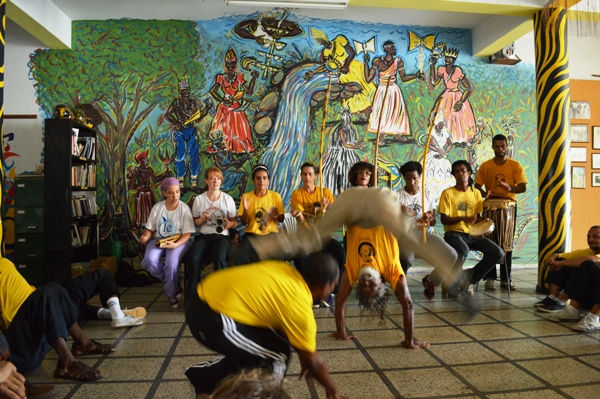Salvador may lag behind Rio and the Amazon jungle on many visitors’ Brazil itineraries but as I recently discovered, there are more than enough good reasons to include Brazil’s 16th-century capital in your travel plans. Almost 4 million slaves were brought from Africa to Brazil and for the majority of them, Salvador was their initial arrival point. It’s no surprise therefore that it is in Salvador that Brazil’s African influence is most keenly felt, in its music, its dance and its distinctive cuisine.
While I was surprised to see the extent to which Salvador’s African heritage is felt in the city’s everyday activities, there was a common thread running through every aspect of this – that of candomble. Candomble is the religion that was brought over to Brazil by the Africans who came as slaves. It centres on the belief in a single god and a number of deities, called Orishas, to whom people pray for protection and blessings. If it sounds a bit like Catholicism with its worship of saints then it’s that similarity which enabled the worshippers to continue to practice their faith even when it was forbidden to do so. When the slaves were forced to attend Mass, they simply adopted a Catholic saint and attached their Orisha’s characteristics to that saint.
Candomble is now openly practised and there are over 1000 terreiras in Salvador alone. I visited one and observed a ceremony – I’ll never forget the dancing, the rhythms, but most of all the intensity of those taking part. It is possible for visitors to attend a ceremony (Sunvil can arrange such a visit for its clients) but visitors should be aware that this is no cultural show and nothing is being done for the sake of visitors. There is no photography allowed and the ceremony can last for many hours (although you will be free to come and go when you’ve seen enough).
If a full-on ceremony sounds a bit too much to take in, it’s easy to see Candomble influences in the music on display on many of Salvador’s streets. There are musicians in many public places during the day, and while some of the streets around the old town are best avoided on most evenings, residents come out in numbers on Tuesday evenings and you’re bound to catch several bands playing distinctly African rhythms.
You’ll also see capoeira dancers in the streets (we saw them in other parts of Brazil, although Salvador is the spiritual home of this half-dance, half-martial art). We sat in the sun and admired their effortless movements and lightning reactions as they sparred to the measured rhythm of the traditional African berimbau and tambourine.
Above all else, you can experience the African influence through the food of Salvador. Try acaraje, the city’s signature street food, made from black-eyed peas fried in dendê oil and served with dried shrimps and hot sauce. It is typically sold from carts around the city by ladies dressed in traditional Bahian dresses. And if you like seafood then you shouldn’t leave Salvador without sampling moqueca, a stew made up of fish and prawns and filled with flavours sourced from Africa, Asia and South America.
Many of Brazil’s large cities have a sense of familiarity for European visitors, thanks in large part to the massive immigration of Europeans to the country’s south in the past 200 years. Salvador retains its own distinctly African feel and a result offers a very different experience as part of a holiday in Brazil.





